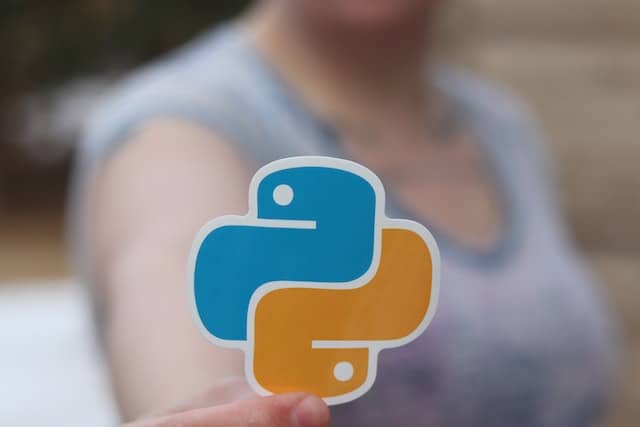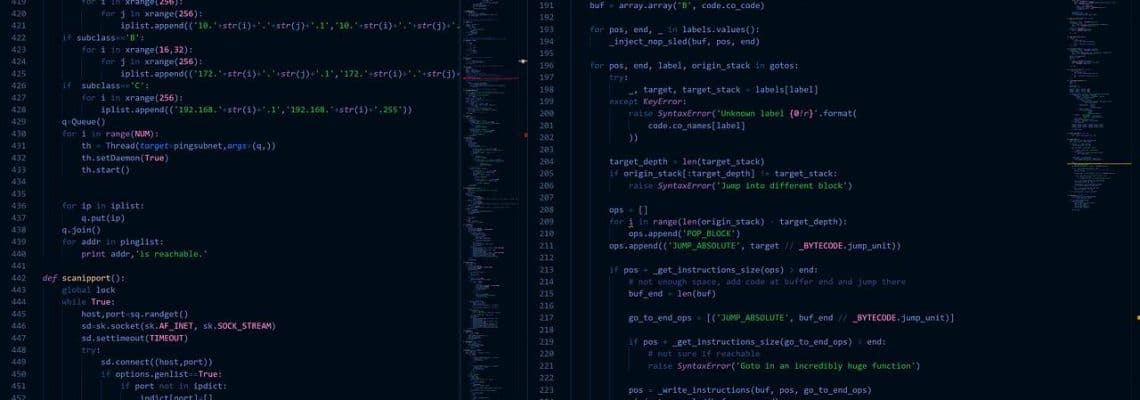The Python web platform Flask has become increasingly famous over the past few years. It is well-known for being easy to use, versatile, and expandable. Flask is a lightweight platform. So, basically, it’s a web application known as Flask framework for creating basic websites with minimum effort. It prioritizes fundamental features. This is essential in order to construct online apps without dictating a rigid structure. As a result, programmers can construct online apps rapidly and effectively. This is in complete command of the source code.
There is a large selection of add-ons and enhancements available for Flask. It makes it easier for programmers to incorporate new features into their software. Examples include integrating with a database, authorization, and building a RESTful API. This essay will introduce you to Flask and cover the basics of how it works. In this tutorial, you’ll learn how to use Flask effectively. We’ll go over everything you need to know, from installing Flask to releasing your program to live web servers.
What Actually a Web Framework is?

A Python developer is using flask framework for web development.
It’s a type of software system that’s used to build websites. In other words, it’s meant to make building online apps easier. It offers a methodical web framework for constructing and arranging online apps. It offers a collection of APIs, tools, and library resources. Web engineers can utilize it to build applications for the web. Web frameworks are typically created in a specific language. For example, Python, Ruby, or Java. The program offers a collection of resources for programmers to use. It helps them create online apps more rapidly and effectively.
A web application framework written in Python, like Flask or Django, gives coders a collection of tools and modules for creating web apps. It has functions like navigation, templates, authorization, and database linking. As a result, it simplifies the process of creating online apps for programmers. Web frameworks simplify the development process by outlining a set of rules to follow. As a result, the code is more manageable and teamwork is simplified.
Web frameworks free up coders to concentrate on the meat of a program. Standards and recommendations are provided. That can be used to construct websites rapidly and effectively.
What is Flask Framework
The Python web platform Flask is incredibly lightweight. It’s made for simple and fast web development. When using Flask, programmers can create websites with a minimum of fuss. Only the bare minimum is provided, but that’s all you need to make a fully working web program. The web framework Flask provides programmers complete freedom in designing their applications. It’s flexible enough to meet their individual requirements.
The built-in template generator is one of Flask’s most impressive features. Using it, programmers can easily make websites with changing content. The Jinja2 template engine used by Flask is a potent piece of software. By facilitating the automatic creation of content in response to user input, it streamlines the process of developing an HTML template.
There is also a versatile transportation mechanism available in Flask. As a result, it’s simple to specify which URLs will lead to which sections of the program. In addition, Flask has built-in help for managing queries, sessions, and cookies. Flask supports extensions that help to add its ability.
Toolkits and Template Engine that Use in Flask Framework
Flask is an online platform for Python that is well-liked due to its ease of use and adaptability. It offers a streamlined strategy for building websites for programmers. A variety of toolkits and design tools are available as well. Create sophisticated online apps with these.
Jinja2
The Jinja2 template engine is a core part of Flask and is both robust and versatile. Provides a developer-friendly interface for creating HTML templates. Template inheritance, macros, and filters are just some of the sophisticated tools available. The flexibility of Jinja2 makes it easy for programmers to make elaborate frameworks.
WSGI
In order to facilitate communication between web servers and Python web apps, a set of tools known as WSGI (Web Server Gateway Interface) has been developed. It liberates the development of online apps from the constraints of any one web server. Because of this, deploying and scaling apps across multiple web server settings is simplified.
Flask-Bootstrap
The Flask-Bootstrap toolset makes it easy to incorporate the Bootstrap framework into Flask projects. The Bootstrap front-end system is widely used. Thus, it is simple to design visually appealing and functional online applications. Flask-Bootstrap offers a library of premade, modifiable themes and components.
Flask-WTF
Flask-WTF is a set of tools for managing online forms in a Flask app in a safe and convenient manner. In addition to preventing cross-site request forgery (CSRF), it also validates user data. That may facilitate the development of trustworthy and safe online applications. Flask-WTF also includes a library of premade form controls. For instance, select lists, radio buttons, and tabs. That’s flexible and simple to alter.
Flask-SQLAlchemy
Working with SQL databases is now a breeze, thanks to Flask-SQLAlchemy. Common database tasks are automatically supported. Examples include data-related queries, filters, and sorts. An object-relational mapping (ORM) web framework is also available in Flask-SQLAlchemy. Using this, programmers can manipulate database files just like any other Python entity.
Flask-Migrate
Flask-Migrate is a trustworthy tool for Flask developers to use when migrating databases. The database design can be modified in a methodical fashion by the engineers. In addition, it supplies a toolkit for streamlining the transfer operation.
These frameworks and generators offer coders a wide selection of robust and user-friendly resources. Therefore, Flask makes it simple to create sophisticated online apps. Developers can cut down on overhead by making use of these resources. They’ll be free to concentrate on making excellent apps that serve their customers’ requirements.
Why Use Flask Framework?

As a web app framework, Flask has many advantages.
Flask is portable and has a low learning curve. In terms of site design, it takes a very simple strategy. Programmers can rapidly begin working thanks to this. Flask also provides a variety of add-ons and other helpful utilities. Adds to its usefulness and can be used in various ways. Because of this, it is a flexible platform that can be used for a variety of web app purposes.
When it comes to configuration, Flask provides a lot of leeways. Developers are free to use their preferred database and object relational mapping tool. Flask is compatible with numerous view modules and script frameworks. This makes it simple to create web applications that are tailored to your project’s requirements.
The enthusiastic and productive developer community is continuously creating new tools, extensions, and mods for Flask. As a result, coders working with Flask have access to a plethora of useful materials. There is a sizable coder group there that can answer questions and provide guidance. You can add your files into different folders instead of creating a single python file.
So, if you choose Flask web framework, you have a good web framework choice. You can easily create a complex website with this web framework.
How to Set Up Flask
Setting up Flask is a fairly straightforward process. It can be accomplished in a few simple steps:
Step 1: Install Python
Flask requires that you have Python already loaded on your device. Python itself can be obtained from the Python website. Select the version of Python that is compatible with your OS.
Step 2: Create a Virtual Environment
![]()
Before downloading any Python tools, it is recommended to set up a virtual environment. This will ensure that your project’s requirements don’t interfere with those of any other Python programs you may have installed.
Launch a terminal session and move into the directory where you intend to build your virtual world. Then type the following command:
Step 3: Activate the Virtual Environment
![]()
After your virtual machine has been set up, you must enable it before you can begin loading software. Run the following program to start the virtual environment:
Doing so will launch the simulated setting. The desktop greeting will also be altered to reflect the fact that you are now operating in a simulated setting.
Step 4: Install Flask
![]()
Now that you have your virtual machine set up, you can run Flask. Flask can be installed by typing the following instruction.
Step 5: Create a Flask Application

Now that Flask is set up, you can begin developing your very own Flask program. Make sure you have a file in your project’s root directory and append the following to it:
You should create an index page. Put it in the templates folder. With this code, you can make a brand-new Flask program. It’ll set up a path that sends a short message in response to visits to the base URL.
Step 6: Run the Flask Application
![]()
The following instruction will launch the Flask app:
Start the Flask development server and assign the name of your application file to the FLASK_APP environment variable with this command.
When the web server is up and operating, you can access it through a web browser by going to any local host server. The “Hello, World!” greeting should now be visible in your browser.
Step 7: Add Additional Routes and Functionality

Now that your Flask app is live, you can expand its features by adding new paths. You can create a new path to retrieve data from a database or external API in response to queries made to a given URL, for instance.
The following is an illustration of defining a new route that will deliver JSON data.
This code creates a new path accessible via the /data URL, which returns a statement as a JSON object.
Step 8: Deploy Your Flask Application
![]()
Deploying your finished Flask program to a live server is the next logical step. Flask apps can be deployed in a number of methods, but one popular method is to use a cloud hosting service like Heroku or Amazon Web Services (AWS).
To deploy your Flask app to Heroku, follow these steps:
- Make a fresh Heroku account and download the Heroku Command Line Interface.
- To build a new Heroku service and upload your code, execute the following commands in your project directory:
- Your code will be uploaded to a new Heroku app called “myapp”, which will be created at this point.
- To launch your program in a web browser after your code has been published, use the following command:
![]()
This will launch your application in a separate tab so you can try it in real-world conditions.
Difference Between Flask Framework and Other Frameworks

Python has many frameworks.
When it comes to creating software for the web, many developers choose Python. Developers can choose from a number of different online platforms. You can take a course in python web programming with us if you still don’t know what python is.
How does the widely-used Python web platform Flask stack up against its competitors? Here’s how Flask stacks up against some alternative Python web frameworks:
Django
Django is a web platform that allows developers to create sophisticated websites and web apps. It has an object-relational mapper, administrative user interface, and transportation mechanism already installed. On the other side, Flask is a lightweight and adaptable micro-framework. Flask is superior to Django when it comes to creating complicated web apps, but both are suitable for developing simpler ones.
Pyramid
Similar to Django, Pyramid is a well-liked Python web platform. It’s purpose-built for making highly-scalable online apps. It’s a full-stack system that has many of the same functions as Django. But it’s more adaptable than Django. As a result, coders can pick and choose which parts to use. On the other hand, Flask is a lightweight and easy-to-use alternative to Pyramid. Smaller tasks would benefit more from this approach.
CherryPy
Another lightweight platform for creating web apps and APIs is CherryPy. It’s simple to pick up and use. It has a built-in web server and routing mechanism, among its many other functions. In contrast, Flask’s adaptability and versatility make it a better choice for developing a wide variety of apps. The Flask community is bigger, and there are more third-party tools to choose from.
Conclusion
Flask is a robust and adaptable web development platform. It is appropriate for building a web application. Its template engine makes using HTML templates in software development simple. This makes it an excellent option for creating websites. Flask is a great option for developing a tiny to medium-sized web application due to its adaptability.
Flask allows programmers to pick and choose which modules they employ. In order to fulfill their requirements, they can develop a web application. Because of its low complexity and weight, it is excellent for beginners. Due to Flask’s popularity, many add-ons and tools have been created by the community. This helps the procedure of updating a web application with new functions and abilities.
Overall, Flask is a good web framework choice for programmers who want to build adaptable and feasible web applications. Its HTML templates and template engine make it simple to develop attractive and adaptable web applications. When designing a web application, Flask provides the resources and adaptability necessary for success. Flask is a superb choice for developing web applications due to its ease of use, mobility, and strength.
